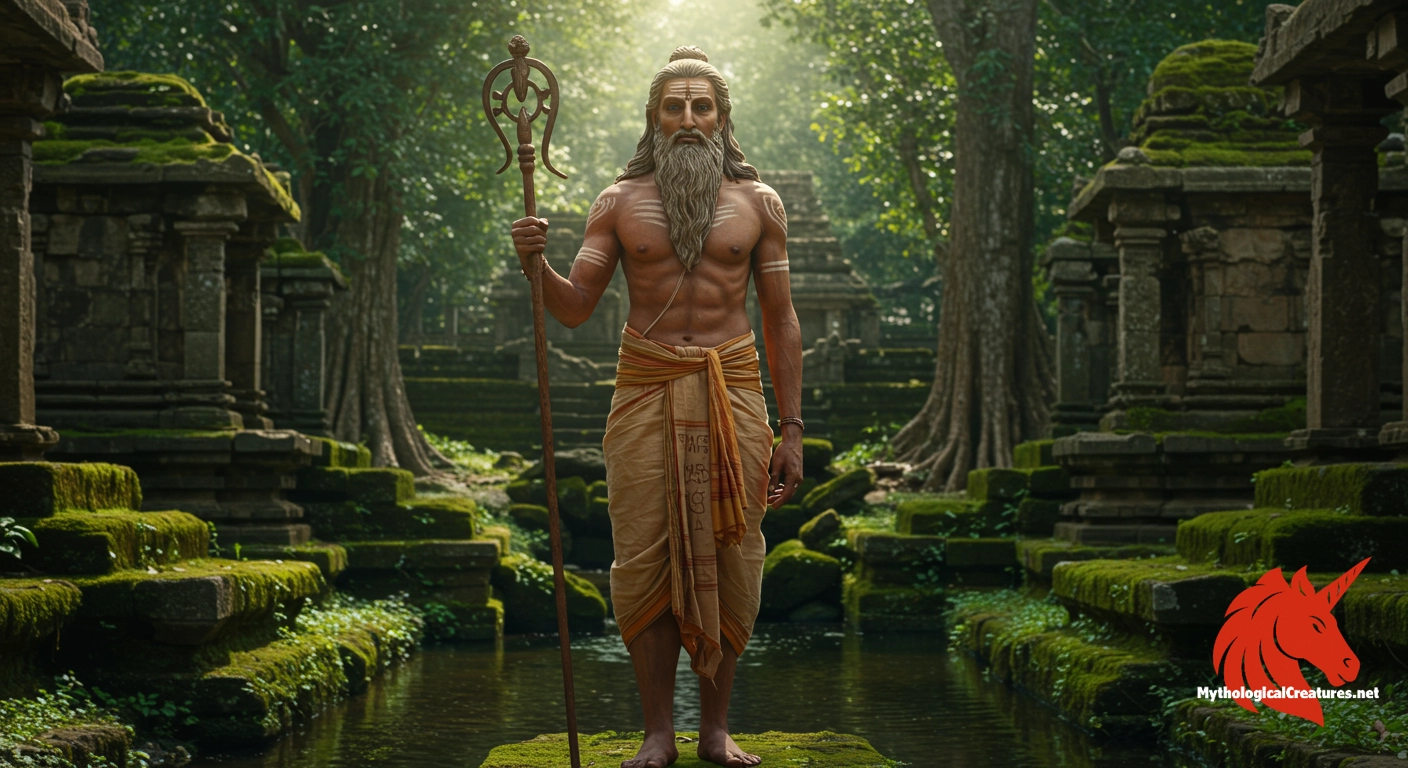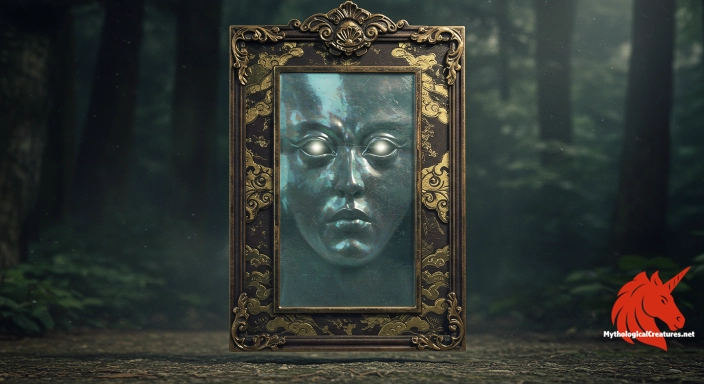Mamuni Mayan: Mamuni Mayan is an ancient Tamil sage credited with founding Vastu Shastra and authoring seminal texts such as the Mayamata Vastu Shastra and the Surya Siddhanta.

Mamuni Mayan
Mamuni Mayan - Mamuni Mayan is revered for laying the foundations of Vastu Shastra and for his profound contributions to ancient Tamil literature and scientific thought.
Origins & First Encounters
Mamuni Mayan emerges as a luminary in ancient Tamil lore, his persona fusing profound wisdom with the mastery of cosmic disciplines. His story, etched within the contours of Sangam literature, speaks of a sage who transcends ordinary existence through his deep connection to both the spiritual and the scientific. He is conceived as a bridge between the realm of myth and the rigour of empirical knowledge, with his origins steeped in early literary traditions. His identity intertwines with the esoteric practices of Vastu Shastra, suggesting that the secrets of cosmic architecture were entrusted to him. The narratives surrounding his life hint at an enigmatic beginning, where the natural and the divine converge. Mamuni Mayan is depicted as a keeper of primordial knowledge, with tales that extend into the realms of the Vedic traditions and the intricate grammar systems of Tamil literature. His first recorded appearances in texts such as Cilappatikaram and Manimekalai position him as a seminal figure whose legacy echoes through the ages. The cultural milieu that surrounds him is one of reverence and mystery, making him an emblematic figure for those seeking harmony between the earthly and the divine.
Source Texts & Tale Variants
The chronicles of Mamuni Mayan are woven through an array of storied texts and varied literary traditions. His presence is most vividly captured in the ancient Sangam works like Cilappatikaram, Manimekalai, and Civaka Cintamani, where each account casts a subtle yet distinct light on his multifaceted legacy. Variations of his narrative also surface in the broader tapestry of Hindu epics, with some texts aligning him with the legendary asura Mayasura. These early records are complemented by later compositions that recount his foundational role in the genesis of Vastu Shastra and his attribution as the author of seminal texts like the Mayamata Vastu Shastra. A number of traditional manuscripts preserve details of his contributions to the Pranava Veda, melding the realms of language, architecture, and cosmic energy. Additional layers of his story are found in less formalised folklore, where the sage’s exploits intertwine with moral and metaphysical instruction. The differing versions of his tale suggest a deliberate preservation of his wisdom across time and regions. Thus, his literary presence not only cements his role as an ancient seer but also reflects the dynamic evolution of myth through the ages.
Form & Powers
The depictions of Mamuni Mayan meld both the physical and the metaphysical, presenting him as a figure of serene authority and enigmatic allure. Numerous portrayals suggest an ageless visage, with deep-set eyes that mirror the depth of ancient wisdom and the enigmatic mysteries of the cosmos. His flowing hair and well-tended beard are portrayed as marks of his eternal connection to the cycles of time and the wisdom passed through generations. Often, he is shown draped in traditional, richly embroidered robes that echo the intricate patterns of cosmic and sacred geometry. The imagery surrounding him sometimes presents an imposing yet graceful stature, one that bridges the realms of the sage and the architect. His countenance, bathed in a soft, otherworldly luminescence, speaks of an inner fire that is both scholarly and celestial. In various depictions, his hands, steady and deliberate, are shown holding symbolic items such as ancient scrolls or the instruments of geometric measurement. This carefully crafted physical presence imbues Mamuni Mayan with a dual essence of the mortal and the divine, a visual narrative that complements the profound lore surrounding him.
Regional Faces
The legend of Mamuni Mayan reverberates differently across the diverse cultural landscapes of the Indian subcontinent. In the Tamil heartland, he is venerated as the quintessential sage whose insights laid the bedrock for both the arts and the sciences, especially in the realms of architecture and grammar. Local traditions accentuate his role as a guardian of sacred knowledge, often depicting him as the progenitor of the Pranava Veda and the architect of cosmic harmony. As the myth travelled beyond Tamil borders, his persona absorbed nuances from various regional mythologies, blending with broader Hindu narratives where his identity occasionally merges with the asura Mayasura. In northern traditions, his character is sometimes imbued with a more complex, even paradoxical nature, reflecting both benevolent guidance and challenging wisdom. Rural and folk renditions place him at the centre of festivals and ritual enactments, where he is celebrated for his pivotal role in the construction of sacred spaces. Each locale tends to infuse the legend with distinctive artistic and symbolic elements, creating a rich mosaic of interpretations. This regional diversity underscores how Mamuni Mayan’s story has been continuously adapted to meet the cultural and spiritual needs of various communities.
Cultural Parallels
Mamuni Mayan’s multifarious identity finds resonances in a host of other legendary figures drawn from diverse cultural mythologies. His role as a sage and architect of cosmic order invites comparison with Greek figures like Daedalus, known for their ingenious craftsmanship and visionary prowess. Similar themes echo in the ancient Chinese doctrines of Feng Shui, where the alignment of space and cosmic energies mirrors Mayan’s teachings in Vastu Shastra. Across the Egyptian and Mesopotamian traditions, we also encounter wise figures entrusted with the secrets of natural order and sacred geometry, illustrating a universal pursuit of the divine principles underlying creation. His association with both wisdom and a challenging, sometimes adversarial nature also finds parallels in mythological archetypes that embody the dualities of light and dark. The synthesis of practical knowledge with mystical insight in his lore is reflective of Hermetic traditions, where esoteric wisdom is a pathway to understanding the cosmos. In juxtaposing his narrative with those of similar ancient seers, it becomes clear that Mamuni Mayan occupies a unique space that marries the tangible and the transcendental. This cross-cultural dialogue ultimately enriches our understanding of how ancient societies perceived the convergence of the earthly and the supernatural.
Legacy & Modern Evolution
Over the course of millennia, the legacy of Mamuni Mayan has undergone a transformation that mirrors the evolving landscapes of both myth and modern thought. In early literary records, he was enshrined as a sage whose contributions stretched from the theoretical realms of Veda knowledge to the practical arts of architecture and spatial design. As eras advanced, his mythos was continually reimagined, reflecting shifts in cultural, religious, and scientific paradigms. In the medieval period, his narrative became a touchstone for discussions on cosmic order, inspiring both scholars and artists to explore the secrets of sacred geometry. Modern interpretations have seen Mamuni Mayan embraced as a precursor to contemporary sustainable design philosophies, his ancient insights finding relevance in the quest for environmental harmony and community-centred spaces. The name Mamuni Mayan now signifies a link between time-honoured wisdom and modern innovation, his teachings acting as a bridge over the chasm of centuries. Today, his figure is celebrated not only in academic circles but also in art, popular media, and cultural festivals that highlight the timeless appeal of ancient knowledge. This enduring heritage positions Mamuni Mayan as both a symbol of historic depth and as an inspirational guide for contemporary thought, embodying the eternal interplay of tradition and modernity.
Interesting Fact
Despite being rooted in ancient texts, Mamuni Mayan's contributions remain influential, with his works still studied for their insights into architecture, grammar, and astronomy.
Quick Creature Info
Our Mythic Legendary Rating:

Also Sometimes Known As:
Habitat:
Supernatural Powers:
Physical Attributes:
Abilities:
Behavior:
Weaknesses:
Lore:
Related Creatures, Tales or Lore
- VVishwakarma
- AAgastya
- VVishwamitra
References
Discover Another Mythical Legend You May Not Have Heard Of?
Uncover the mysteries of ancient folklore and expand your knowledge of legendary beings from cultures around the world.
Dare to Meet the Ungaikyō....
Mythical Disclaimer: The images and data on this site are derived from various historical and literary sources, but we have found that many myths often have multiple versions and interpretations across references, sometimes contradictory. As a result, these creature depictions are artistic interpretations—imaginative blends of folklore, legend, and a dash of AI guesswork. Because creature descriptions vary widely, our illustrations and accompanying information represent our best effort to honor mythology while bridging creative gaps. Enjoy these interpretations—just remember, we've done our best to respect the stories and validate available data, but in the realm of mythology, details often shift, imagination leads the way, and nothing is ever set in stone!
Curated by the Mythological Creatures Team (rev. May 2025)
